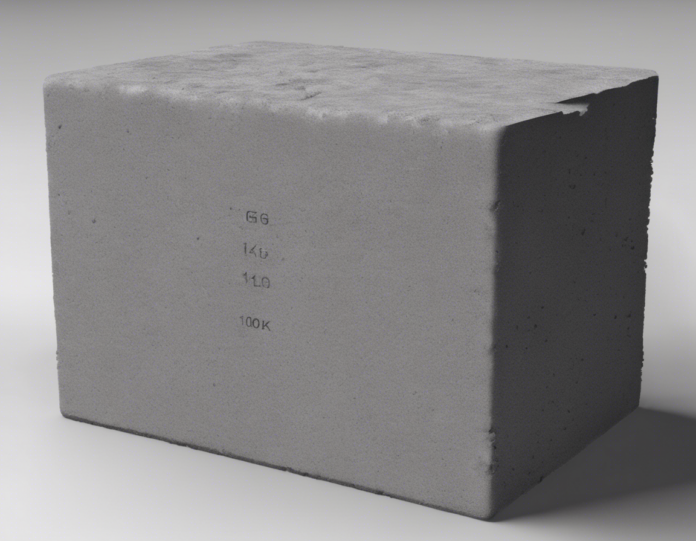Introduction:
In the realm of physics, the concept of mass plays a crucial role in determining the behavior of objects under various conditions. One such scenario involves a block of mass 10 kg, which serves as an excellent example to delve into the properties and implications of mass in motion, forces acting upon it, and its interaction with the surrounding environment.
Understanding Mass:
Mass is a fundamental property of matter that quantifies the amount of substance in an object. It is a measure of an object’s resistance to acceleration when a force is applied. In simpler terms, mass can be thought of as a measure of how much ‘stuff’ is present in an object.
For our 10 kg block, this means that it contains a considerable amount of matter compared to lighter objects and would require more force to accelerate or decelerate it. Essentially, the mass of an object influences its inertia, making it more difficult to change its state of motion.
Key Properties of a 10 kg Block:
-
Weight: The weight of an object is the force exerted on it due to gravity. The weight of an object can be calculated using the formula Weight = mass x acceleration due to gravity. For our 10 kg block, the weight would be 10 kg x 9.81 m/s^2 (typical value for acceleration due to gravity), resulting in an approximate weight of 98.1 N.
-
Inertia: Inertia is the resistance of any physical object to any change in its velocity. Objects with greater mass, such as our 10 kg block, have greater inertia, making them harder to accelerate or decelerate.
-
Force and Acceleration: According to Newton’s second law of motion, F = m x a, where F represents the force applied, m is the mass of the object, and a is the acceleration produced. Therefore, the force required to accelerate a 10 kg block at a certain rate can be calculated using this formula.
-
Friction: When the block is placed on a surface, friction comes into play. The frictional force acting on the block is dependent on the coefficient of friction between the block and the surface. This force can oppose the motion of the block.
Forces Acting on the Block:
-
Gravitational Force: Every object with mass is subject to the force of gravity, which pulls it towards the Earth. The gravitational force acting on our 10 kg block is 98.1 N, calculated earlier.
-
Applied Force: When an external force is applied to the block, it can cause the block to accelerate or decelerate, depending on the direction of the force relative to the motion.
-
Normal Force: When the block is placed on a surface, the surface exerts an equal and opposite force perpendicular to the block’s weight. This is known as the normal force.
-
Frictional Force: As mentioned earlier, when the block is in contact with a surface, the frictional force acts in the opposite direction of the motion and depends on the coefficient of friction between the surfaces.
Impact of Mass on Motion:
The mass of an object, such as our 10 kg block, plays a critical role in determining its motion. When a force is applied to the block, it will accelerate according to Newton’s second law. The greater the mass, the more force is required to accelerate the object at the same rate as a lighter object.
In scenarios involving collisions or interactions with other objects, the mass of the block also influences the outcome. The block’s inertia will determine how it responds to external forces and the resulting motion after the interaction.
Frequently Asked Questions (FAQs):
- Does the mass of an object affect its weight?
-
Yes, the weight of an object is directly proportional to its mass. The greater the mass, the greater the weight of the object.
-
How does mass differ from weight?
-
Mass is a measure of the amount of matter in an object, while weight is the force exerted on an object due to gravity.
-
Why is inertia important for objects with mass?
-
Inertia is crucial as it determines how an object responds to external forces. Objects with greater mass have greater inertia, making it harder to change their state of motion.
-
How does friction impact the motion of a 10 kg block on a surface?
-
Friction acts in the opposite direction of the motion of the block and can impede its movement. The magnitude of the frictional force depends on the coefficient of friction between the block and the surface.
-
Can an object with mass move without any external forces acting on it?
- According to Newton’s first law of motion, an object at rest will remain at rest, and an object in motion will continue moving at a constant velocity unless acted upon by an external force.

